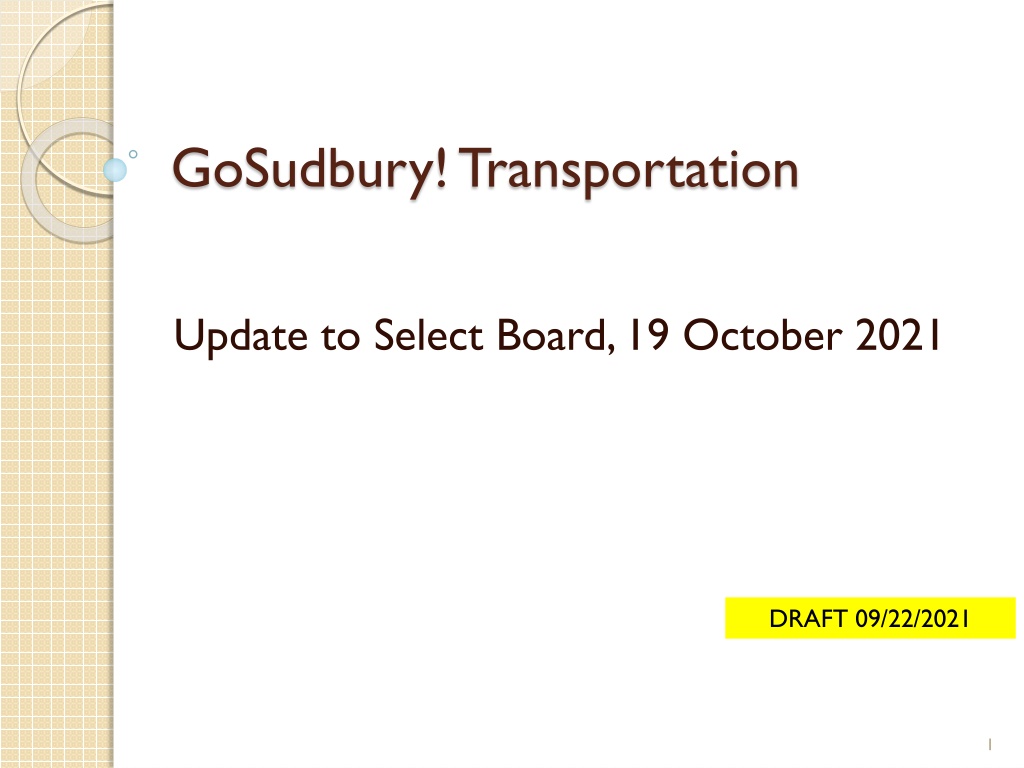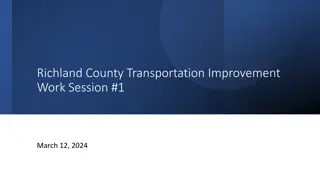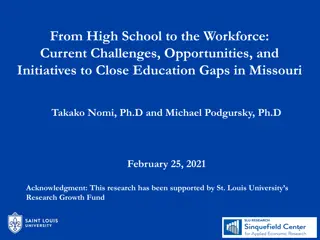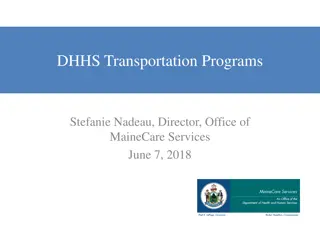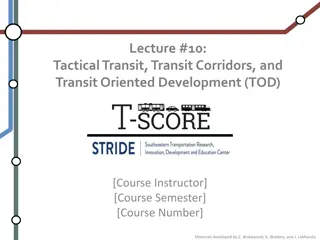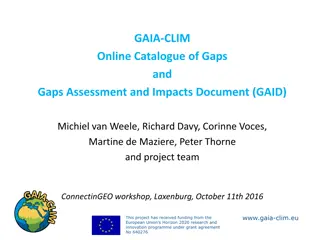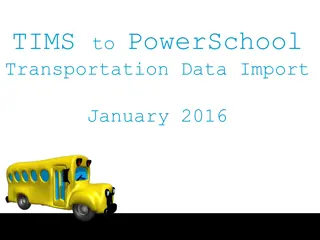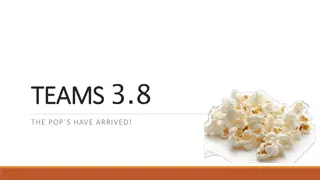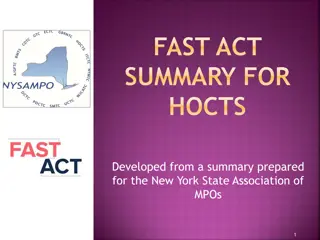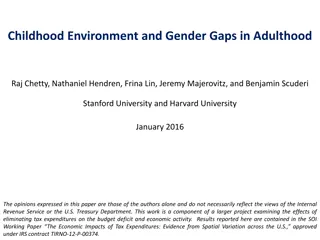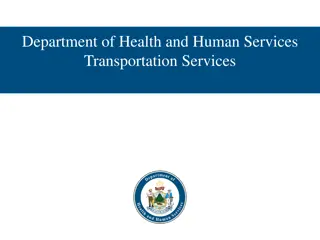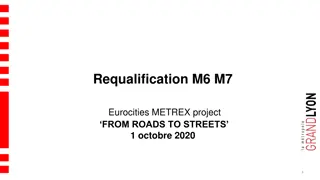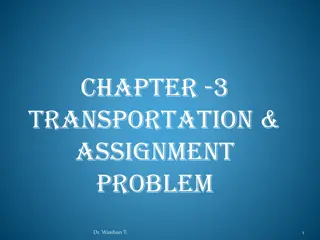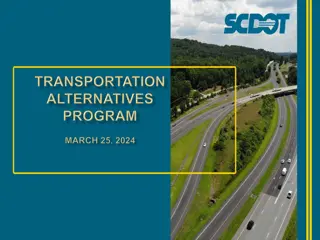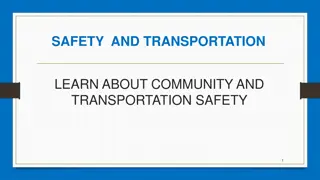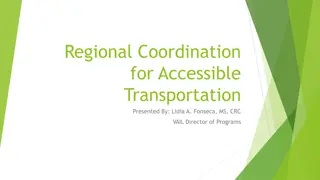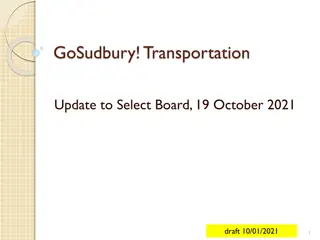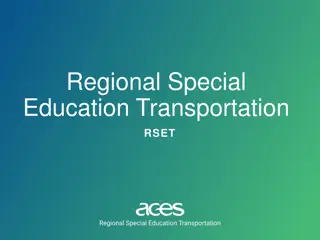Addressing Transportation Gaps in Sudbury: A Livable Community Approach
The Sudbury Transportation Committee, established by the Select Board, aims to enhance transportation in Sudbury to create a livable community. Focusing on inclusivity, equity, and addressing transportation gaps impacting various aspects of livability, the initiative seeks to improve social participation, well-being, housing options, civic engagement, and overall community attractiveness. Challenges such as a car-dependent environment, demographic changes, and mobility issues are being addressed to create a more accessible and sustainable transportation system.
Download Presentation

Please find below an Image/Link to download the presentation.
The content on the website is provided AS IS for your information and personal use only. It may not be sold, licensed, or shared on other websites without obtaining consent from the author. Download presentation by click this link. If you encounter any issues during the download, it is possible that the publisher has removed the file from their server.
E N D
Presentation Transcript
GoSudbury! Transportation Update to Select Board, 19 October 2021 DRAFT 09/22/2021 1
History The Sudbury Transportation Committee was created by the Select Board to address a key feature of livable communities: transportation. A livable community is defined as one that is safe and secure, has affordable and appropriate housing and transportation options, and offers supportive community features and services. Well-designed, livable communities promote health and sustain economic growth, and they make for happier, healthier residents of all ages. http://www.aarp.org/livable-communities/net-work- agefriendly-communities/info-2014/an-introduction.html DRAFT 09/22/2021 2
History The Livable Sudbury initiative leverages knowledge gained from community initiatives developed around the world, including many in Massachusetts. By focusing explicitly on people of all ages rather than exclusively on older adults, Livable Sudbury is aligning its efforts with community priorities. The commitment made by the Livable Sudbury initiative to emphasize inclusion and equity in process and outcomes also reflects a laudable innovation. Equity means that there are no disparities from intent or unanticipated outcomes in residents access to community opportunities. Disparity of access diminishes inclusion, which affects people s feelings of belonging to and satisfaction with their community. The latter can result in isolation and serious, negative, health consequences. DRAFT 09/22/2021 3
History Transportation gaps affect all livable domains, reducing the overall livability and long-term attractiveness of the town o Lack of transportation limits social participation o Lack of transportation affects overall well-being (domain of community and health services) o Lack of transportation affects housing options and limits access to outdoor spaces o Lack of transportation limits civic participation and employment o Lack of transportation can result in segments of the town population not feeling welcomed (respect and social inclusion). DRAFT 09/22/2021 4
The Current Reality Sudbury has been described as a car-dependent transit desert Because Sudbury, along with Bolton, Boxborough, Carlisle, and Stow, is classified as rural, it is very difficult to justify mass transit Increase in senior population in Sudbury and other communities because of aging-in-place PLUS in-migration to age-restricted developments, etc. Increase in financially vulnerable population in Sudbury, because of affordable development expansion ( Chapter 40B ) and housing cost burden of seniors aging-in place Age-related increase in number of people with disabilities impacting mobility DRAFT 09/22/2021 5
Transit Deserts (MAPC Data) DRAFT 09/22/2021 6
Initiatives Underway $80,000 Community Compact Cabinet Grant (2019): Making the Connections Sudbury, Acton, Bolton, Concord, Maynard and Stow; using microtransit to supplement CoA and RTA services (in process) $23,050 MAPC COVID-19 Emergency Taxi Grant 1 (2020) o Sudbury contracted with Tommy s Taxi and JFK Transportation (concluded 2.28.21) $100,000 MAPC COVID-19 Emergency Taxi Grant 2 (2021) o Sudbury, Concord, Maynard, Stow contracting with Tommy s Taxi and JFK Transportation (in process) $10,000 GoSudbury! Uber Rides Program Pilot (2021) o Sudbury contracting with Uber as part of Making the Connections DRAFT 09/22/2021 7
Focus of Initiatives Current focus for all transportation initiatives is meeting priority needs. For Sudbury, these are defined as transportation to: healthcare and social services, shopping, community resources, and work. Residents most in need of such transportation include those: Over age 50 years, With disability (temporary or permanent) Veterans Financially vulnerable. DRAFT 09/22/2021 8
Data Collected Here we can put # of rides, cost per ride, etc. Take right from one of Alice s great updates Cost of taxi vs Uber important to highlight! Where were people going -- transition to the graphics on next page DRAFT 09/22/2021 9
Data Collected Visuals here either Uber s dashboard graphics or the google maps w/ pins e.g. highlight Route 20 corridor Absolutely, and we need to show data on taxi usage, especially during first grant such as registrants with disability (see my Excel excerpt sent to Doug), medical appointments (as you noted, when few other options were available during COVID), and rider feedback (very important to show we collect this). We can discuss together We want the SB to have a balanced view of what we re doing and not fixate on the low cost of Uber. DRAFT 09/22/2021 10
Accomplishments to Date Metropolitan Area Planning Council taxi grants (September 2020-January 2021 first grant, supplemented by Town; May-August 2021 second grant, medical trips only) Under Accomplishments I think it is important to highlight the tie of transportation to physical health (talk about, for example, trips to dialysis) as well as mental health Average time providing service = 7 months Total taxi trips (one-way) = 855 Average taxi trips/month = 122 Also we were able to provide rides during Covid when other options were not available! Uber GoSudbury! program (March 2021-August 2021) Average time providing service = 6 months Total Uber trips (one-way) = 588 Average Uber trips/month = 99 Both excellent points, although prior slide expanded may supplement what we need to put on this slide. March August 2021 Sudbury Connection Van Service: 584 rides provided, average 97 rides/month Dial-a-Ride Supplemental Service (MWRTA): 39 rides provided, average 6 rides/month DRAFT 09/22/2021 11
Lessons Learned Successes We shouldn t skimp here! Celebrate what we ve done Agreed, and we need to be clear in how we define success. I believe we reached and are reaching most of the most needy (frail, disabled, older, poor). We provided a huge number of rides in comparison to what was available. We demonstrated what the priority needs are, and who needs them most. Sudbury as a Model/Leader Here I think we should mention that others in the Region *and State* are looking to what we are doing and modelling their behavior after ours Lead Community . I like this, especially after hearing that we were among a relatively small number of communities doing the first MAPC grant. And, we are a model for a rural-suburban region with multiple RTAs and little MBTA services. The challenge is a national one: public/mass transit cannot be efficiently expanded to areas like ours, and communities like us are pushed to demonstrate what can work (e.g., Newton with Via, Lexington, etc.) Tie to Livable Sudbury survey I think we can show that our data validates it! I think we can prove there is a need! Thank you for keeping this front and center! DRAFT 09/22/2021 12
Lessons Learned Pitfalls/Gaps We address ONLY the top priority destinations for the most needy. Transportation is important for so many more residents. The Livable Sudbury assessment found: Transportation is identified as crucial by a wide range of stakeholders: o Families with children under 18 years o Residents age 60+ o Residents of all ages with a participation limitation o Residents of all ages who are not financially secure. Need to get Disability much space here; yes, and repeat the data we have on registrants with disability (undercounted, of course) Dependence on outside funding (we had to shut down the Taxi program); equally as important, we spent twice as much as MAPC awarded, and we should be proud of that Town Staff scattered Sr Center, Planning Office, Social Worker; emphasize range of stakeholders and the fac that 90% of work is done by committee (we love them, but it s very inefficient and not sustainable) Rider apprehension (not sure what you mean?) DRAFT 09/22/2021 13
Do we want to talk about the changing/growing Sudbury? Population rose 7.2% 2010 vs 2020 # housing units rose 10.2% 2010 vs 2020 Target State: Sustainability The town is close being built-out, but there are age-restricted and affordable developments such as Quarry North that can have big impact. The issue your raised is sure to be questioned by SB, so let s meet that head on 2019 Livable Sudbury needs assessment: Transportation is the town s biggest challenge. Sudbury now at crucial stage: Is there Town commitment to a sustainable, effective, and efficient system of transportation for all residents? If yes, how do we ensure a sustainable, effective, and efficient system of transportation for all residents? DRAFT 09/22/2021
Target State: Sustainability From Mission Statement crafted by Select Board: It is envisioned that the Committee s purpose and tasks will become part of the responsibilities of town departments or bodies at some future date. - Transportation Coordinator Deb gathering data from other towns insert something here - Could use part of their time to look for funding (State, other grants) - Act as central conduit for Transportation matters What is goal of this slide? Should we try to define personnel; e.g., Acton, Newton or Lexington models? Should we describe briefly how other towns have addressed transportation? DRAFT 09/22/2021
Thank you & Questions DRAFT 09/22/2021
